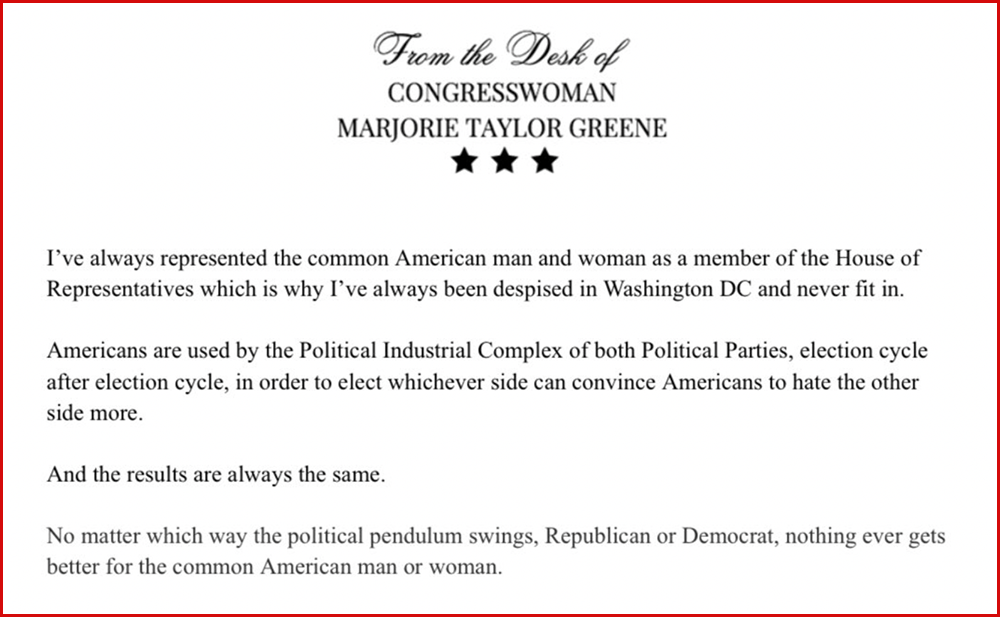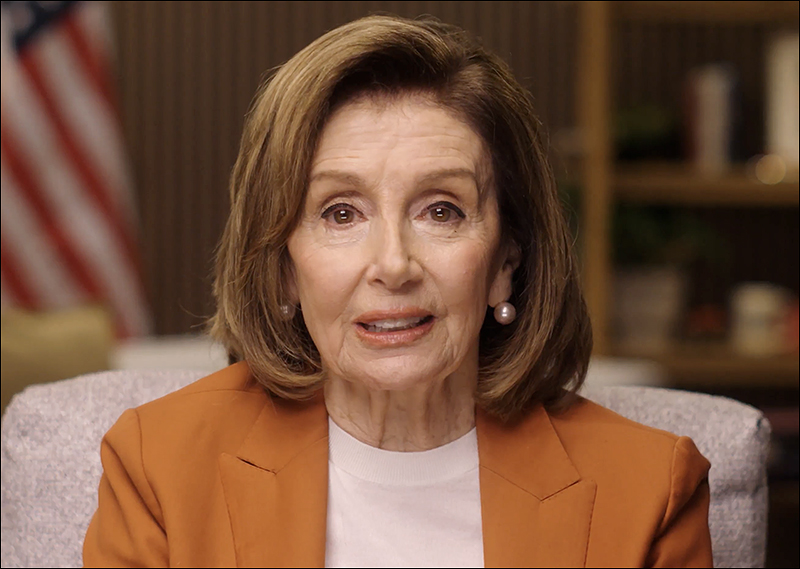
Read Rep. Marjorie Taylor Greene’s full resignation letter on X.
By Jim Ellis — Tuesday, Nov. 25, 2025
US House
Three more US House seats became open late last week, from Georgia, California and New York.
GA-14
The recent feud between former staunch allies President Donald Trump and Georgia Rep. Marjorie Taylor Greene (R-Rome) has culminated with the latter resigning from office.
In her resignation announcement, Rep. Greene said, “I have too much self-respect and dignity, love my family way too much, and do not want my sweet district to have to endure a hurtful and hateful primary against me by the President we all fought for, only to fight and win my election while Republicans will likely lose the midterms.”
Rep. Greene indicates she will resign from the House effective Jan. 5. Once the abrupt resignation becomes official, Gov. Brian Kemp (R) will schedule a special election to fill the northwest Georgia vacancy.
The Dave’s Redistricting App partisan lean for GA-14 is 69.2R – 28.9D, which makes the 14th the safest Republican district in Georgia. The seat contains nine full counties and part of Cobb. The CD stretches from near the city of Marietta on the district’s southern border all the way to Tennessee, encompassing the area just south of Chattanooga.
CA-14
On the heels of billionaire Tom Steyer (D) entering the open jungle California gubernatorial primary, seven-term US Representative and former presidential candidate (2020) Eric Swalwell (D-Livermore) announced on the “Jimmy Kimmel Live” program that he will also run for Governor next year.
At this point, a total of 63 individuals, 24 Democrats, 20 Republicans, and 19 independents or minor party candidates, have announced their gubernatorial intentions. It remains to be seen how many actually petition to run by the state’s candidate filing deadline scheduled for March 11 (five days later than the official March 6 deadline because the incumbent Governor is not running). The official candidates will then go on to compete in the June 2 statewide jungle qualifying election.
Under California voting procedure, all candidates are placed on the same initial election ballot regardless of party preference. The top two finishers, irrespective of party preference or percentage attained will advance to the general election.
Therefore, in such a situation with several candidates who appear capable of qualifying for the general election, i.e., Democrats Steyer, former Rep. Katie Porter, ex-Los Angeles Mayor Antonio Villaraigosa, Health and Humans Services Secretary, ex-CA Attorney General, and former Congressman Xavier Becerra, and Republicans Steve Hilton, a former Fox News host, and Riverside County Sheriff Chad Bianco, it may be difficult to conceptualize Rep. Swalwell at least capturing second place in an expensive statewide campaign.
At the end of September, the Congressman reported only $520,000 in his campaign account, so he would certainly be considered well behind in the money chase for a California statewide campaign.
In any event, his 14th Congressional District now becomes an open seat, which is the fourth in California and the second from the San Francisco Bay Area.
The new CA-14 district, which covers the East Bay area south of Oakland and is fully contained within Alameda County, houses the cities of Fremont, Hayward, Livermore, and Pleasanton. The new partisan lean, according to the Dave’s Redistricting App statisticians, is 68.4D – 30.6R. Therefore, it is reasonable to believe that two Democrats could advance into the general election from the open June 2 jungle qualifying election.
NY-7
Saying, “I love this work and I love my district, but I believe now is the right moment to step aside and allow a new generation of leaders to step forward,” Veteran Rep. Nydia Velazquez (D-NY) declared late last week that she will not seek re-election to an 18th term next year.
The Velazquez announcement means there will be over 40 open seats in the House for the 2026 election. Including Reps. Eric Swalwell (R-CA) and Velazquez, the total number of exiting Democratic members now rises to 15.
The exact open seat figure will be determined when the Texas redistricting saga finally ends, and a 2026 map is locked in place. The state of Texas immediately appealed to the US Supreme Court, asking for a stay of last week’s three-judge panel ruling that returned the state, at least temporarily, to the 2021 map.
Justice Samuel Alito, the administrator for the 5th Circuit Court of Appeals in which Texas lies, granted the state’s request. Therefore, last week’s three-judge panel decision is stayed, and unless the high court takes further action the 2025 map returns as the plan in place.
Velazquez is the ranking Democrat on the Small Business Committee, a panel that she chaired for four years during the period when her party last controlled the House majority. She will leave a Brooklyn-Queens congressional district that will remain safely under Democratic control.
New York’s 7th District finds 60 Perent of its population in Brooklyn and 40 percent in the Queens borough. According to the Dave’s Redistricting App statisticians, the NY-7 partisan lean is a whopping 85.7D – 11.5R, so the fight to succeed Rep. Velazquez will occur in the June 23 Democratic primary.






